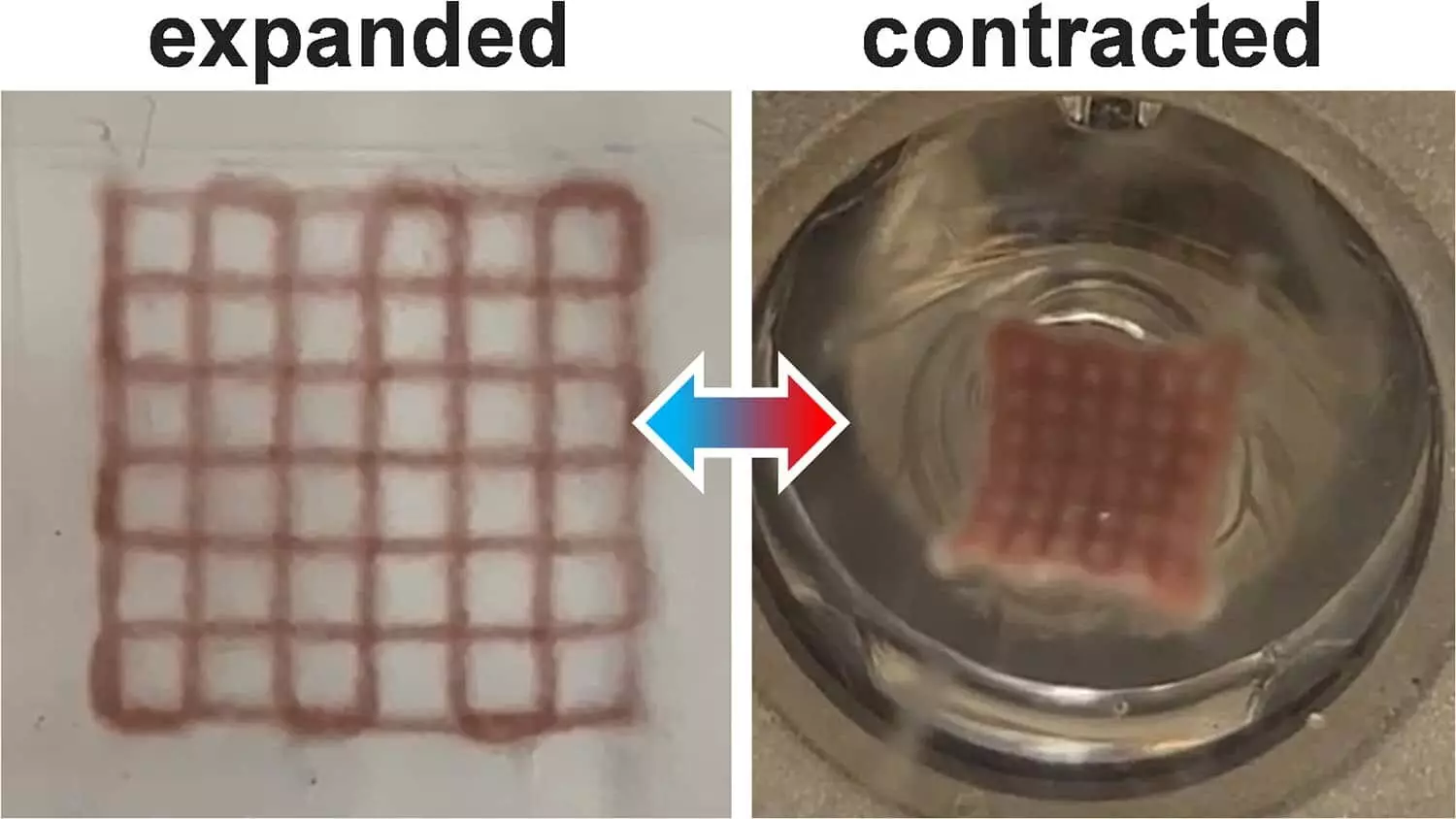In a remarkable step forward for materials engineering, researchers have successfully integrated gold nanorods into hydrogels, developing structures capable of controlled contraction and expansion in response to light. This innovative technique allows for the 3D printing of these photoresponsive materials, thus opening new avenues for remotely controlled actuators—a concept that could radically alter design paradigms in various fields from robotics to biomedical applications.
The underlying principle of this research lies in leveraging light as a means to activate mechanical movement. Traditionally, materials like hydrogels have been known to respond to heat, but this study introduces a novel approach that capitalizes on optical stimuli. Joe Tracy, a professor at North Carolina State University, emphasizes this transition from thermal to optical control, declaring that the research team sought to create a method that allows the hydrogel’s capabilities to be harnessed through illumination rather than direct heat application.
Understanding the Science Behind Hydrogels
To appreciate the significance of this work, it’s essential to understand the nature of hydrogels. These polymeric networks, often comprising vast amounts of water, find their applications in diverse sectors, from healthcare—where they are used in contact lenses—to agriculture, where they aid in moisture retention. However, the versatility of hydrogels has traditionally been constrained by their thermal activation—a limitation that this new study seeks to overcome.
The process of creating these photoresponsive structures involves printing a specialized solution that contains the requisite materials for hydrogel formation, along with gold nanorods. Once extruded through a 3D printer, the solution can be exposed to light, which triggers the cross-linking of polymers in the solution, transforming it into a solid hydrogel. As Julian Thiele, a co-author of the research, notes, this innovative method enables hydrogels to be designed not just for their absorbent qualities but for dynamic mechanical actions as well.
The Challenges of 3D Printing with Hydrogels
One of the significant hurdles in 3D printing with hydrogels is their inherent low viscosity. Printing a standard hydrogel solution onto a regular surface could result in puddles rather than defined shapes. To counter this challenge, the researchers devised an ingenious solution by printing into a translucent gelatin slurry. This approach allowed the 3D printer’s nozzle to penetrate the slurry, thereby shaping the hydrogel while still permitting the necessary light to permeate and activate the polymerization process.
This intricate technique showcases not only the ingenuity behind the research but also the level of interdisciplinary collaboration involved. By bringing together fields such as materials science and chemical engineering, the researchers have set a new benchmark in the capability to design complex hydrogel structures through precise control over material properties and printing processes.
Applications Beyond Imagination
The ramifications of these findings extend far beyond the laboratory. The ability to produce structures that respond dynamically to light opens significant possibilities in areas like soft robotics, where actuators could be embedded into flexible materials to create adaptive movements. Furthermore, in medicine, drug delivery systems could benefit immensely from such technologies, utilizing light to trigger the release of therapeutic agents with pinpoint accuracy.
Moreover, the implications for consumer products and everyday applications are vast. Imagine smart textiles that adjust their permeability based on sunlight or responsive medical devices that alter their properties based on external stimuli. As Melanie Ghelardini, the lead author of the paper, points out, this leap to light-responsive materials is not merely an incremental improvement—it represents a foundational shift that expands the scope of what is possible with hydrogels.
The Path Ahead for Research and Development
While this research heralds exciting prospects, there is still much to explore in the realm of 3D-printed hydrogels. Issues of scalability, material longevity, and the practical integration of these systems into existing technologies must be addressed. Continuous collaboration will be vital as researchers strive to optimize these materials for real-world applications.
The journey of innovation is filled with challenges, but studies like this illuminate the potential of creative problem-solving in materials science. With the potential for substantial advancements on the horizon, it is clear that the future of actuators—and indeed of materials innovation—is expanding into the realm of light-driven, responsive technologies. The melding of art and engineering in this context not only captivates the imagination but inspires a new generation of researchers and creators to explore uncharted territories.


Leave a Reply